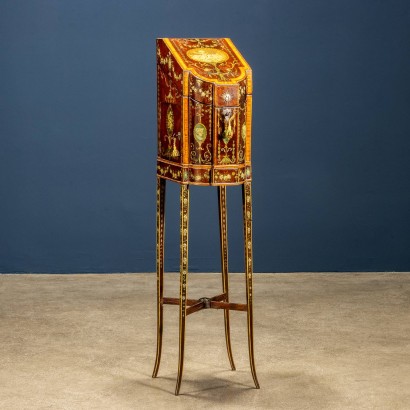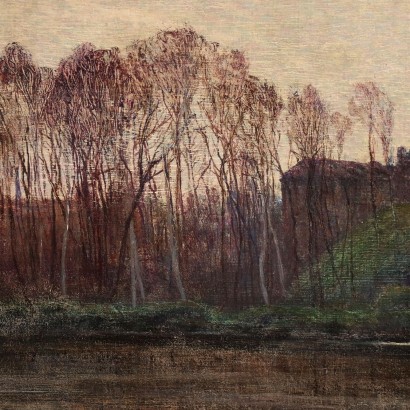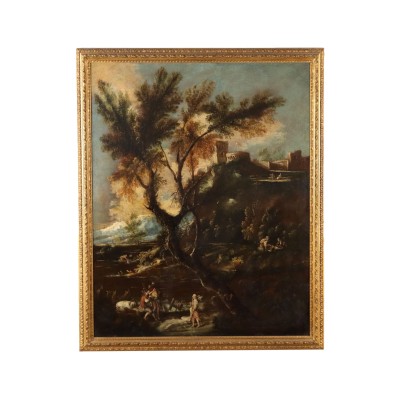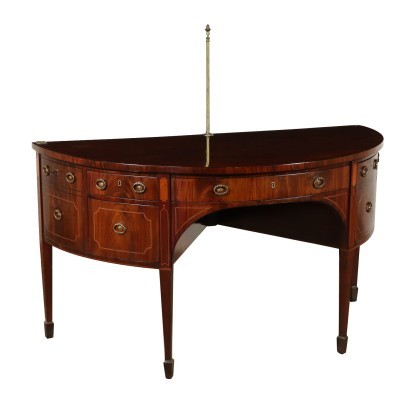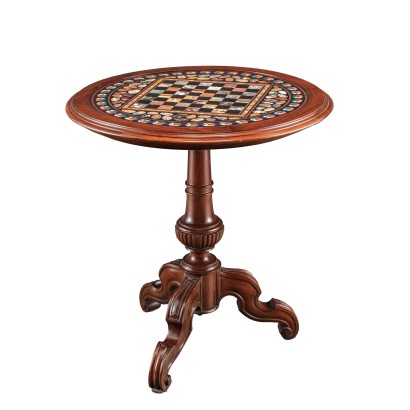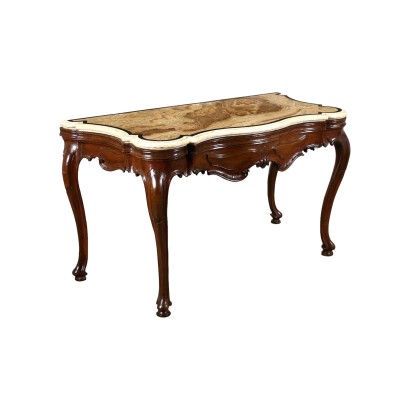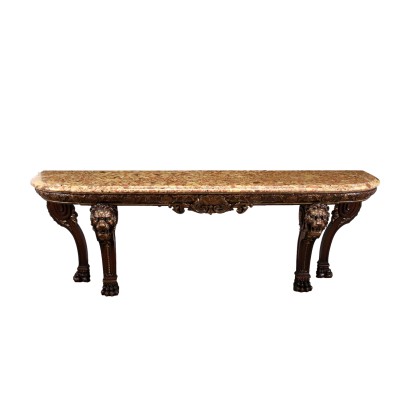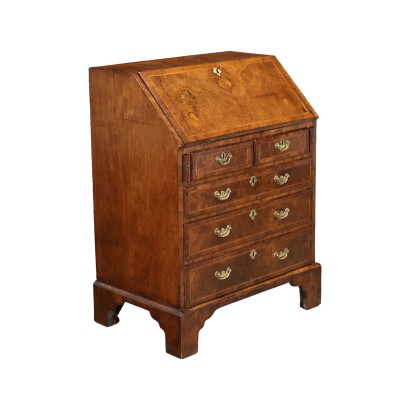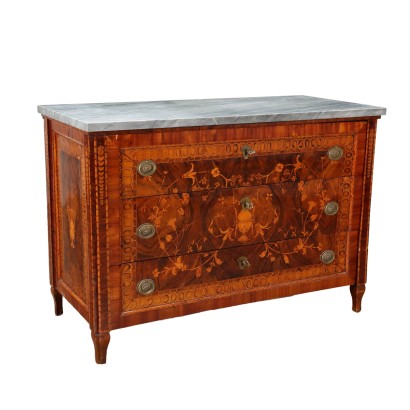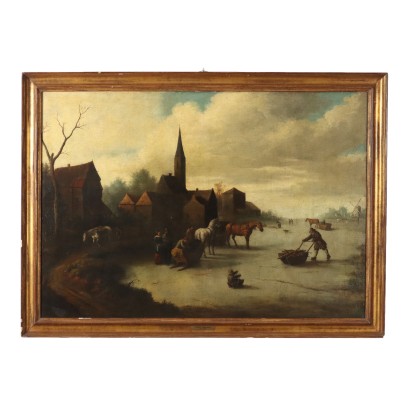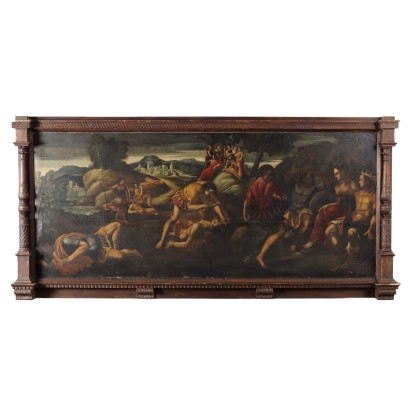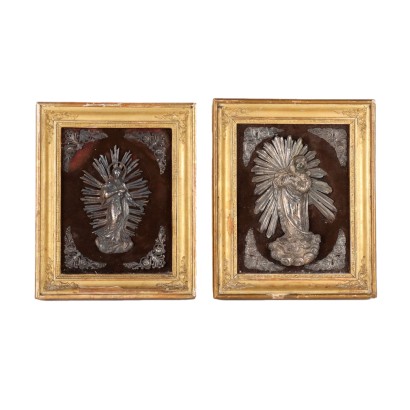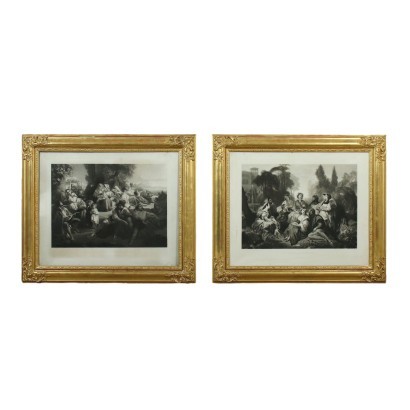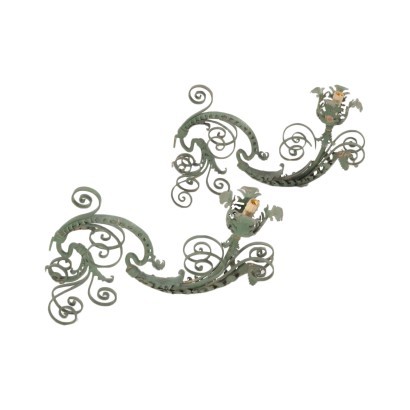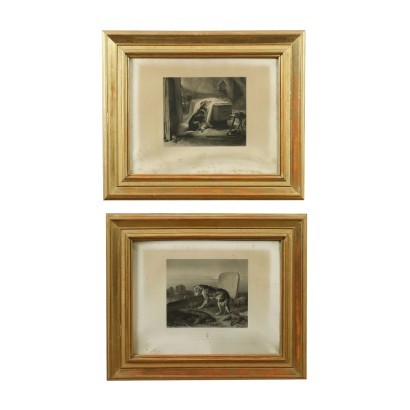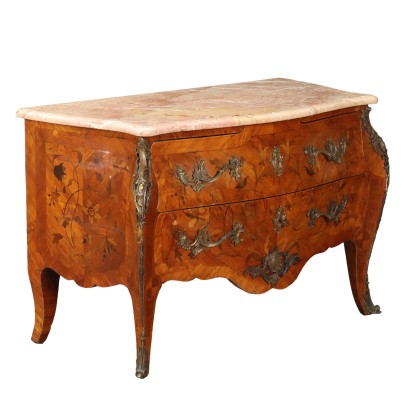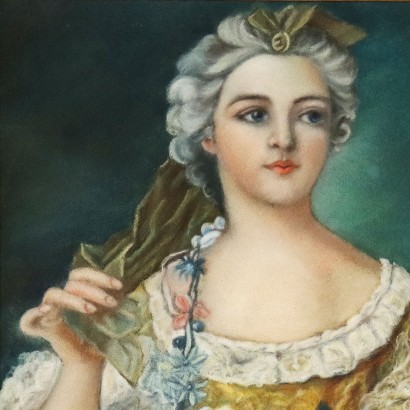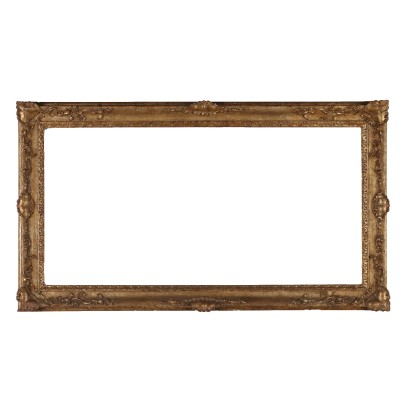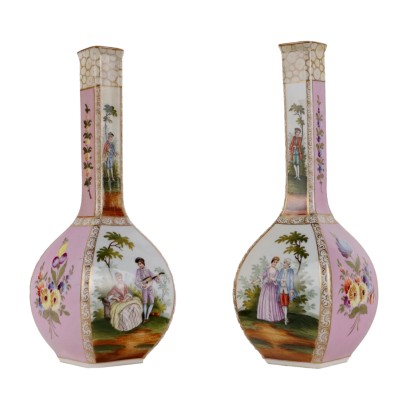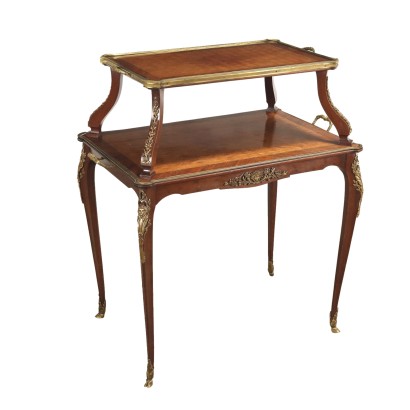George IV Storage Cabinet Mahogany Great Britain XIX Century
Features
Style: George IV (1760-1830)
Age: 19th Century / 1801 - 1900
Origin: England
Main essence: Maple , Brazilian Rosewood , Mahogany
Material: Silver
Description
Storage cabinet, supported by four truncated pyramid uprights with "X" connecting crosspieces. In mahogany, it features bois de rose and maple threads, a small almond inlay on the inside of the door. The whole surface is painted, decorated with garlands of flowers on the uprights, on the front it shows medallions with antique profiles with a classic vase in the center and on the top a medallion with two cupids; on the sides a floral reserve is painted surmounted by a Chinese pagoda umbrella. The hinges and the handle are in silver. The interior was later modified by obtaining a compartment accessible from a side door and replacing the original cutlery holder structure.
Product Condition:
Mobile in fair condition showing some signs of wear.
Dimensions (cm):
Height: 110
Width: 23
Depth: 29,5
Additional Information
Style: George IV (1760-1830)
It is part of the so-called "Georgian" period.This term designates the stylistic activity that took place in England between 1714 and 1830 and included the reigns of George I, George II, George III and George IV.
It is characterized, at its beginnings, by an attitude of reaction to the Baroque.
Precise characteristics and distinctions of this style are not clearly identifiable in the furniture created in England in the eighteenth century.
In the first half of this century, cabinet-making and the products of the various categories of English applied art were affected by the continuous changes in taste and manifested, in the diversity of trends and influences, the uncertainty of a precise stylistic orientation.
In the second half of the eighteenth century, the sensitivity and exceptional ingenuity of four strong personalities, destined to guide the English taste and customs of the time, intervened in the second half of the eighteenth century: Th. Chippendale, R. Adam, G. Hepplewhite and Th. Sheraton.
Find out more with our insights:
FineArt: Tallboy George II, England c.1730
FineArt: Pair of Irish Mirrors, in George III Style, second half of the 19th century



